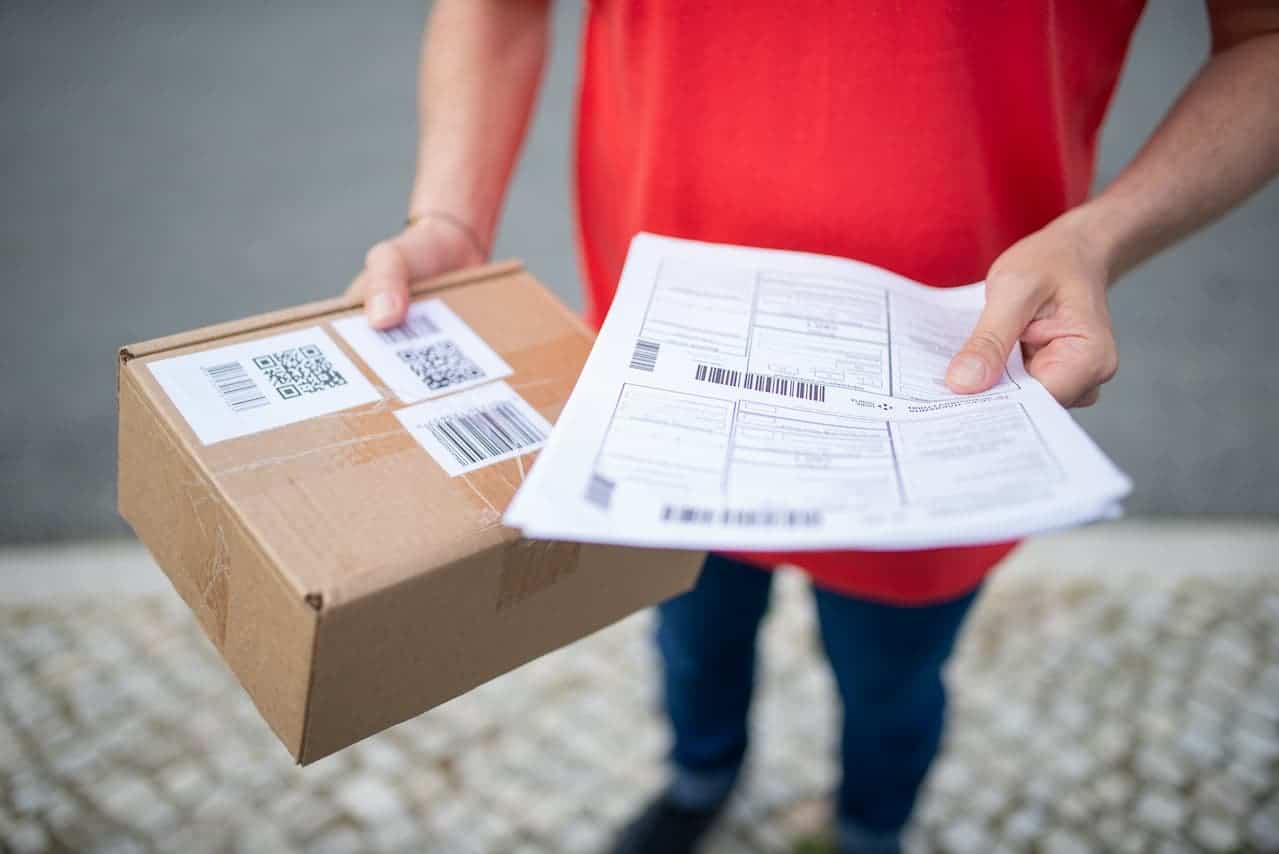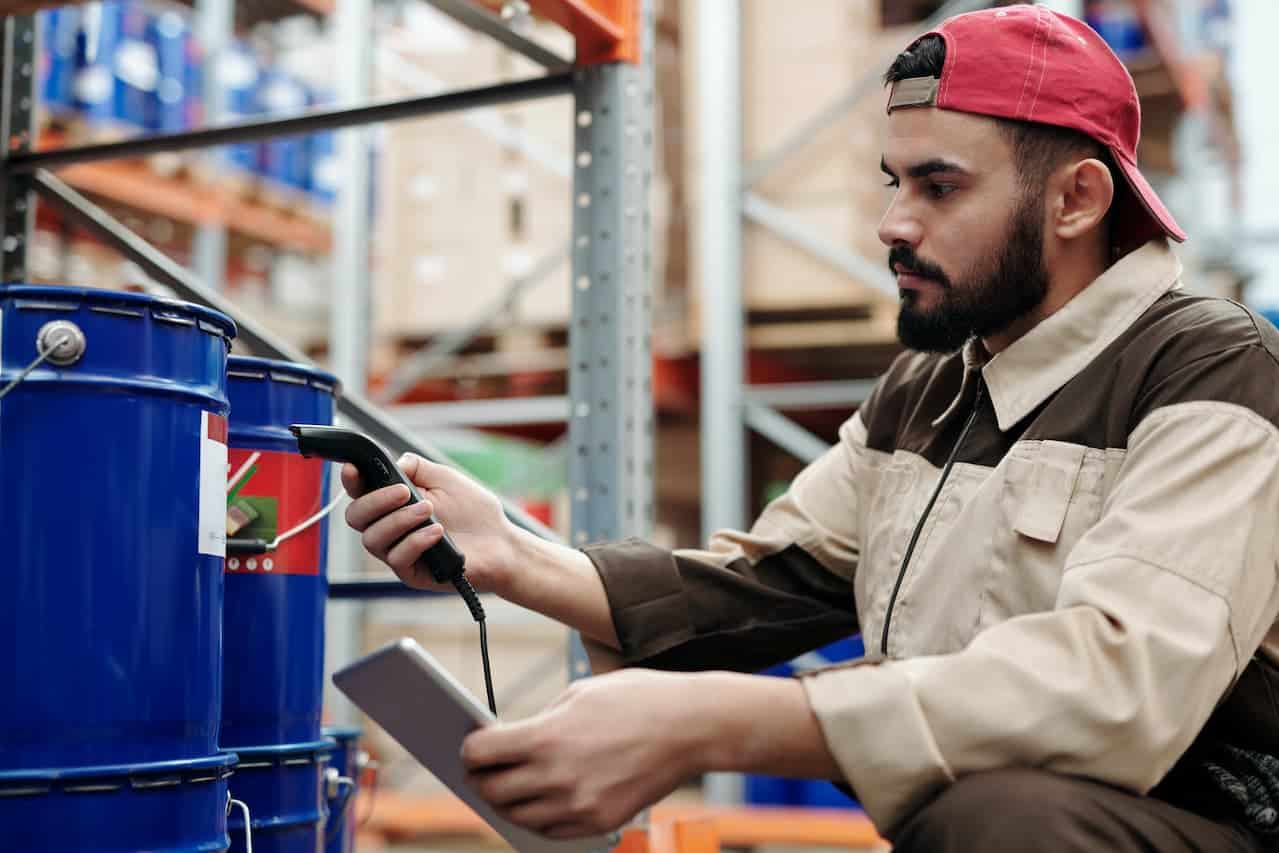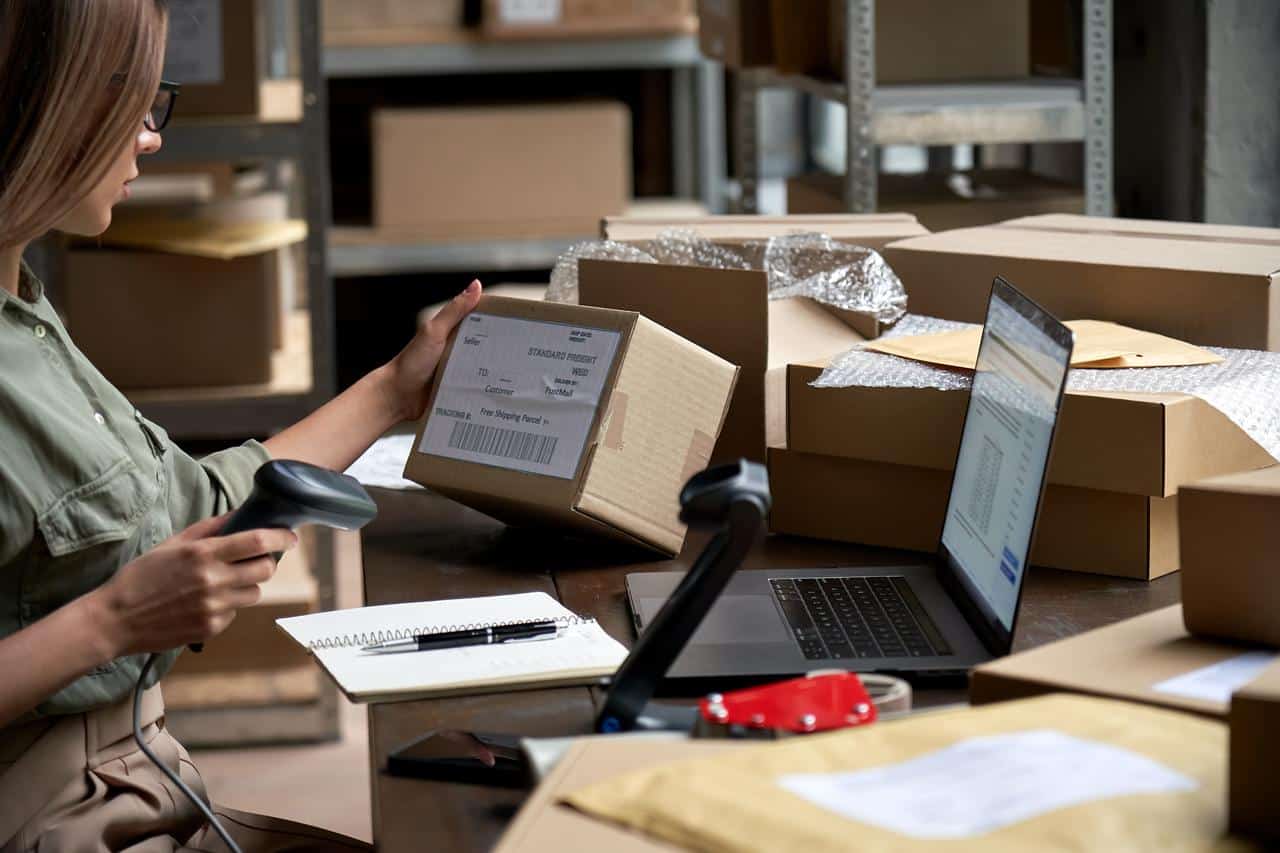Handling returns can be a huge challenge for e-commerce businesses, but it’s absolutely vital to get it right. In a 2022 UK study on Statista, 15% of online shoppers reported that they send back orders most of the time. This makes a well-managed return process even more necessary to deliver a great customer experience.
This is where RMA – Return Merchandise Authorisation – is a game changer. In this blog post, we’ll delve into the RMA meaning and explore the ins and outs of RMA, showcasing the essential role it can play in boosting your e-commerce business. A strong RMA system builds customer trust and streamlines your return process, making it more efficient and nearly error-free.
Ready to elevate your e-commerce business? Let’s find out how RMA, also sometimes known as return goods authorisation, can have a transformative impact on your e-commerce success!
This article covers:
RMA meaning – What is RMA??
RMA process step-by-step
Why RMA is essential for your e-commerce business
How to implement your own RMA
RMA best practices
How to chose the best RMA software
RMA FAQ
What is RMA?
RMA, or Return Merchandise Authorisation, is a practical system that is designed to handle returns more effectively. Beyond just sending items back, RMA deals with the nitty-gritty of repairs, refunds, and replacements. Returns can be approved or denied according to the terms of warranty or set return policies. The goal is to streamline the return process, making it easy for everyone involved. This helps you maintain customer satisfaction and reduce the workload for your business.
How it works: The Return Merchandise Authorisation Process step-by-step
Now that you are familiar with the RMA meaning, you are probably wondering how the RMA process unfolds step-by-step. Let’s examine each phase, so you can understand exactly what procedures are involved.
- Pre-shipment preparation: Equip each item with a pre-printed RMA form or e-commerce return label, detailing the initial purchase, to facilitate easy reporting of any issues.
- Initiating RMA requests: Customers start the RMA process, often through customer service or specific software.
- Assigning RMA numbers: After approving the request, assign a unique RMA number for tracking and processing.
- Returning the product: Customers return the product, following your specific guidelines.
- Product evaluation: Upon arrival, the returned product is thoroughly inspected for compliance with return policies.
- Processing refund/exchange: Based on the evaluation, proceed with a refund, exchange, or store credit, as per policies.
- Effective communication and tracking: Maintain clear communication throughout the process, updating all parties on the return status.
- Closing the RMA Process: Conclude the process when the customer receives a refund or replacement, and update inventory systems accordingly.
RMA number: What is it and why does it matter?
The RMA number is a unique code assigned to each returned item, facilitating a smoother, more organised handling of product returns. Here are the 3 pivotal reasons why assigning an RMA number is essential:
- Unique identification: Each RMA number is exclusive to a particular return, acting as a fingerprint for the item. This helps accurately track returned items, streamline inventory management, and ensure each case is handled correctly.
- Streamlining return processing: By using RMA numbers, you can quickly locate and process returns. This reduces wait times and eliminates confusion, leading to more satisfied customers.
- Fraud prevention: The assignment of unique RMA numbers helps distinguish legitimate returns from fraudulent claims, protecting the business from unwarranted losses.
Why RMA is essential for your e-commerce business
With 67% of online shoppers indicating they won’t order from a store without seeing a clear return policy, a robust RMA system proves to be a key factor in driving customer loyalty. Here are the top benefits of integrating a RMA into your e-commerce venture:
Enhance customer trust
An efficient and transparent return authorisation process enriches your customers’ shopping experience. By simplifying returns, you reassure customers of your company’s trustworthiness and strengthen their confidence in your brand.
The experts have spoken: customers are more likely to buy from an e-commerce site that lets them return items easily.
This is particularly true in the fashion industry, when customers can’t try on items before buying online. While we’re all waiting for virtual try-on tech to become the norm, a straightforward return process is essential. Think of it as a safety net for shoppers. People are more likely to click that buy button, knowing they’re covered if the fit or style doesn’t quite meet their expectations. It’s about building trust and boosting sales by making shopping with your brand worry-free.
Save time and resources
Manual data entry is a common bottleneck for e-commerce businesses, especially when it comes to returns. Automating processes like the generation of shipping labels and an easy access to data can reduce errors and lead to quicker processing and restocking of items.
Additionally, self-service return portals enable customers to initiate and track their returns, decreasing the workload on customer service and allowing them to concentrate on more complex, non-automatable tasks. The result is a leaner operation requiring fewer staff devoted to managing returns.
Incorporating technologies like barcode or QR code scanning for returned items speeds up the reintegration of goods into inventory and ensures stock levels are accurate. This accuracy is crucial for effective stock replenishment and avoiding overstock or stockout situations, ultimately leading to better utilisation of warehouse space and resources.
Faster refunds and top up of store credits
With a comprehensive RMA database, you can quickly identify whether a returned item is eligible for a refund or store credit.
Consider a customer who buys a gadget that, upon arrival, is not functioning properly. With an advanced RMA system, you can promptly confirm the item’s condition, process the return, and immediately top up the customer’s account with store credit. This enables the customer to swiftly use those credits for another purchase, ensuring they don’t have to wait long to reinvest in the products they need.
This focus on rapid resolution directly benefits your business by accelerating the return cycle and maintaining the flow of goods.
Harness return insights to improve your service
Make your service better by learning from customer returns. When you analyse why customers return items, you get relevant information that can help you improve your service. For example, if returns happen frequently because of damaged goods or factory defects, it might be time to rethink your packaging or your relationships with suppliers. If what customers see online isn’t matching up with the real product, consider updating those online descriptions for accuracy.
By tackling these issues and understanding return trends, you can improve product offering and consequently reduce returns.
Assess the condition of returned items efficiently
Improve your returns process by allowing customers to upload images of any damage. This not only speeds decision-making but also provides a clear record of the item’s condition, making decisions quicker.
Consider the benefits: with visual evidence, your team can swiftly decide what to do with each returned item—whether it’s restocking, repairing, or disposing. This approach minimises the need for lengthy physical assessments and cuts down on the uncertainty that often comes with written damage descriptions.
Moreover, this system promotes transparency and fairness. In situations where there’s a difference between a customer’s description and the actual condition of the item, photos act as a reliable reference point to resolve disputes.
Implement your own RMA: A practical start
Let’s be transparent: creating an effective return process is no easy feat. Setting up an RMA system is a tangible task with distinct steps, dependent on your business size and needs. At its core, RMA involves coordinating logistics, inventory, and customer service to manage returns effectively.
To give you a better understanding, consider how business size impacts RMA strategies. Small businesses might invest in a simple setup, where each return is assigned a unique code and customer interactions are handled via email or phone. It’s direct, manageable, and cost-effective. But as you grow, so does the complexity of your returns. Larger businesses typically need a more robust system to handle the volume, often automating the process with specialised software to keep track of returns and maintain customer satisfaction.
Best Practices for RMA Management
Before you choose the right RMA strategy for your business, it’s helpful to follow these best practices for effective RMA management:
- Implement a clear return policy: Make sure your return policy is straightforward and accessible, so customers know exactly what to expect regarding returns and exchanges.
- Leverage technology for automation: Use automated systems to handle tasks such as generating return labels and tracking returns. This minimises manual errors and speeds up the process.
- Train staff on RMA procedures: Provide comprehensive training for your team on handling returns, using RMA software, and communicating with customers to ensure efficiency and consistency.
- Communicate effectively with customers: Keep customers updated throughout the return process to enhance their experience and manage expectations.
- Analyse return data regularly: Review return trends and data to identify common issues and areas for improvement, allowing you to refine your processes and reduce future returns.
Select the right RMA strategy for your business
To establish an efficient Return Merchandise Authorisation (RMA) process tailored to your e-commerce business’s specific needs, consider 3 main options: Manual RMA Process, Semi-Automated Systems, and Fully Integrated RMA Software.
- Manual RMA Process: Best suited for small businesses or startups with minimal returns. It’s a cost-effective approach using spreadsheets or simple document tracking to manage returns manually. Direct customer communication is involved, and while it’s economical for smaller volumes, it may become less efficient as your business grows.
- Semi-Automated Systems: Ideal for growing businesses facing increasing returns. Semi-automated systems blend basic software tools with manual handling to streamline parts of the returns process, like generating return labels or tracking statuses. This balance reduces human error while remaining less resource-intensive than fully automated solutions.
- Fully Integrated RMA Software: The choice for established businesses with medium to high return volume. This software offers a comprehensive suite of tools for automated communications, return shipping management, inventory updates, and data analytics. It’s a more significant investment but provides efficiency and scalability that supports robust return activities.
RMA software: How to choose the best solution for your e-commerce business
Choosing the right Return Merchandise Authorisation software for your e-commerce business involves a multifaceted approach that aligns with your operational needs and scalability aspirations. Here are key considerations to guide your selection:
- Return volume and complexity: Assess the frequency and nature of returns to determine the level of software sophistication needed. High-volume businesses with complex return reasons will benefit from more comprehensive features.
- Features and integration capabilities: Look for software that offers key features such as automated return label generation, real-time status updates, and robust data analytics. Equally important is its ability to integrate seamlessly with your existing e-commerce platform, inventory management, and customer service tools.
- User experience: Both your team and your customers will interact with the RMA system. Choose software that is intuitive and easy to use to ensure efficient internal operations and a smooth return process for customers.
- Scalability: Ensure the software can grow with your business. It should be able to handle increasing return volumes and adapt to changing business models or market needs.
- Support and reliability: Choose a provider known for strong customer support and a reliable platform. Check user reviews and testimonials for insights into their service quality and operational stability.
- Cost vs. benefit analysis: While cost is a significant factor, weigh it against the potential benefits of improved efficiency, customer satisfaction, and reduced return-related costs.
RMA FAQs
What does RMA mean in shipping?
RMA stands for Return Merchandise Authorisation. It’s a process used to handle returns and exchanges of products, ensuring they are authorised, tracked, and processed efficiently.
What is an RMA number and where to find it?
An RMA number is a unique identifier assigned to each return request. The customer typically receives it after submitting a return request to the retailer or manufacturer, and it is usually provided via email or through a customer service portal.
What is an RMA form?
An RMA form, also called RMA slip, is a document that must be completed to initiate a return. It includes details such as the reason for the return, purchase information, and instructions for returning the product.
What is the RMA process? How does RMA work?
The RMA process involves several steps: submitting a return request, receiving an RMA number, returning the item, and receiving a refund or replacement. It ensures returns are authorised, tracked, and managed efficiently.
Why is RMA important?
RMA is crucial for e-commerce businesses because it streamlines the return process, enhances customer trust and satisfaction, reduces errors, and helps prevent fraudulent returns. It ensures that returns are handled systematically and efficiently, benefiting both the business and the customer.
Sendcloud: Your e-commerce shipping ally for simplified returns and business growth
Now that you have a good understanding of the RMA meaning and have learned about the topic in detail, the next step is to take action! And we have good news for you. Sendcloud’s got your back!
Never heard of Sendcloud? We are the supportive shipping partner that helps you navigate the tricky parts of the shipment process, especially when it comes to returns.
Our shipping platform offers a flexible return solution so you can set up your return process quickly, giving you more time to grow your business and keep your customers happy.
We provide a self-service return portal with multiple ways for customers to return items, making things easier for everyone. You can also set rules to automatically determine if an item can be accepted for return or not, saving you time and trouble.
With Sendcloud, you can get returned items back on the shelf quickly, and make use of green options like paperless labels with QR codes. This makes your business more efficient and eco-friendly.
We make setting up return management easy. You also get insights that help you understand why items are returned and improve your level of service every day.
Not sure if Sendcloud is right for you? Set up a chat with our shipping experts to find the best solution for your business.
Remember, an efficient returns process isn’t just good for your customers; it’s great for your peace of mind too!












